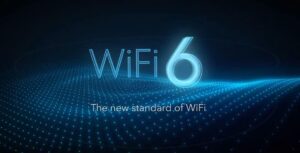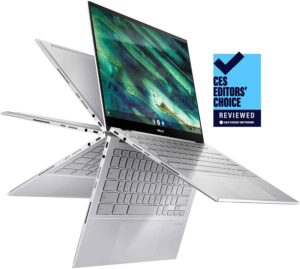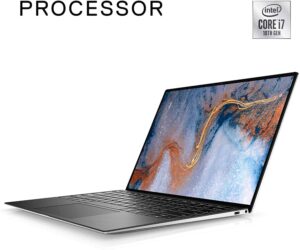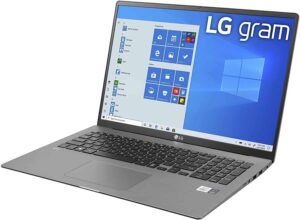
Everyone loves some great internet speed. One of the most frustrating moments is when you need to access something on the internet and your devices take ages to load. With that in mind, Wi-Fi 6 was developed to give some of the fastest Wi-Fi speeds ever. The challenge however is there are just a few Wi-Fi 6 compatible devices in the market today.
Wi-Fi 6 is the new Wi-Fi standard. It offers fast Wi-Fi speed and improved security and privacy. The standards approved in 2019 are available in several Wi-Fi 6 routers.
As indicated, there are a few devices that are able to benefit from Wi-Fi 6 speeds, handling busy networks, and security features. These devices ranging from laptops to phones will ensure that you carry out your online activities in a flash.
Point to note, however, is that Wi-Fi 6 will not speed up slow internet service provider connections. To get faster Wi-Fi speeds you have to get a faster subscription from your ISP. However, it offers the most efficient connection at home or in your office.
There are several other Wi-Fi 6 compatible devices on the line of production. These devices will ensure that you can communicate faster with other devices and with your router.
Wi-Fi 6 compatible devices top picks
| Phones | Laptops |
| Samsung S20 series | HP Spectre x360 |
| Samsung S10 series & Samsung Galaxy Note 10 | Asus Chromebook Flip c436 |
| Samsung Galaxy Fold | Lenovo Yoga c940 |
| iPhone 11, 11 Pro, and 11 Pro Max | Dell XPS 13 (2020) |
| OnePlus 8 and OnePlus 8 Pro | LG Gram 17 |
| Huawei P40 Pro | |
| LG V60 ThinQ | |
| Motorola Edge Plus |
Wi-Fi specifications
The Wi-Fi connection has seen several advances in the past 20 years. There has been advances in Wi-Fi speeds and security features that are factored in any Wi-Fi standard.
The Wi-Fi connections currently use 2 bands; 2.4GHz and 5GHz. These two bands are able to deliver different Wi-Fi speeds and Wi-Fi ranges. Some of the old devices and routers could only work with one Wi-Fi band either 2.4GHz or 5GHz.
The following are the different Wi-Fi standards features:
| Wi-Fi version | Wi-Fi standard | Year of approval | Frequency | Maximum data rate |
| Sixth generation | 802.11ax (W-Fi 6) | 2019 | 2.4GHz & 5GHz | 10-12Gbps |
| Fifth generation | 802.11ac (Wi-Fi 5) | 2014 | 2.4GHz & 5GHz | 1.3Gbps |
| Fourth generation | 802.11n (Wi-Fi 4) | 2009 | 2.4GHz and 5GHz | 600Mbps |
| Third generation | 802.11g (Wi-Fi 3) | 2003 | 2.4GHz | 54Mbps |
| First generation | 802.11b (Wi-Fi 1) | 1999 | 2.4GHz | 11Mbps |
| Second generation | 802.11a (Wi-Fi 2) | 1999 | 5GHz | 54Mbps |
| 802.11 | 1997 | Now defunct |
On a practical basis, Wi-Fi 6 can deliver Wi-Fi speeds that are about 30 percent faster than the fastest Wi-Fi 5 speeds. It also can handle multiple devices and users better than the other Wi-Fi standards.
One of the things on why you should take a Wi-Fi 6 router now is because it is backward compatible. This means you can connect a Wi-Fi 5 laptop or smartphone to a Wi-Fi 6 router, and also, you can connect a Wi-Fi 6 laptop or smartphone to a Wi-Fi 5 router.
This way, you will continue using the older devices with their Wi-Fi standards but will also benefit when you buy a Wi-Fi 6 enabled device. However, to get the fill Wi-Fi 6 benefits, you need to buy Wi-Fi 6 compatible devices and routers.
Wi-Fi 6 compatible devices
To date, there are several devices that are either in the market or on the production line that are Wi-Fi 6 compatible. As you can see the standards were approved in 2019.
The devices range from laptops to smartphones to routers. If you connect a Wi-Fi 6 laptop or smartphone to a Wi-Fi 6 router, you will most definitely enjoy the Wi-Fi 6 benefits.
Smartphones
After Wi-Fi 6 routers, these are the other devices that incorporated Wi-Fi 6 compatibility. In the current climate where there is healthy competition between the different smartphone manufacturers, this was bound to happen.
Samsung was the first to produce a Wi-Fi 6 compatible phone (Samsung Galaxy S10). They were, however, followed by the other manufacturers in quick succession. There are, thus, several Samsung, Apple, LG, Huawei, Oneplus, and other phone brands that are Wi-Fi 6 compatible.
As of today, the following devices are Wi-Fi 6 enabled:
Samsung Galaxy S10 and S10E
Even though Samsung has already produced their next flagship phone (Samsung Galaxy S20) Samsung Galaxy S10, Samsung Galaxy S10 Plus, and Samsung Galaxy S10E are still wonderful phones to have. The phones come at a reasonable price and provide a good connection both on Wi-FI and mobile data.
However, when compared to the Samsung Galaxy S20 series, it fares badly when it comes to 5G connectivity, camera improvements, battery size, and screen refresh rate.
Since 5G will not be a reality to many for several years, it is good to consider getting the Samsung S10 series as it saves on cost currently.
| Specifications | Samsung Galaxy S10E | Samsung Galaxy S10 | Samsung Galaxy S10 Plus | Samsung Galaxy S10 5G |
| Screen display size, resolution, pixel density | 5.8-inch AMOLED; 2,280×1,080 pixels, 438 ppi | 6.1-inch AMOLED; 3,040×1,440 pixels, 550 ppi | 6.4-inch AMOLED; 3,040×1,440 pixels, 522 ppi | 6.7-inch AMOLED, 505 ppi |
| Dimensions- inches (millimeters) | 5.6 x 2.8 x 0.27 in. (142 x 70 x 7.9mm) | 5.9 x 2.77 x 0.31 in. (149.9 x 70.4 x 7.8mm) | 6.20 x 2.92 x 0.31 in. (157.6 x 74.1 x 7.8mm) | 6.40 x 3.04 x 0.31 in. (162.6 x 77.1 x 7.94mm) |
| Weight (grams, ounces) | 150g; 5.3 oz. | 157g; 5.53 oz. | 175g; 6.17 oz. | 198g; 6.98 oz. |
| Software | Android 9.0 with Samsung One UI | Android 9.0 with Samsung One UI | Android 9.0 with Samsung One UI | Android 9.0 with Samsung One UI |
| Primary Camera specs | 12-megapixel (wide-angle), 16-megapixel (ultrawide-angle) | 12-megapixel (wide-angle), 16-megapixel (ultrawide-angle), 12-megapixel (telephoto) | 12-megapixel (wide-angle), 16-megapixel (ultrawide-angle), 12-megapixel (telephoto) | 12-megapixel (wide-angle), 16-megapixel (ultrawide-angle), 12-megapixel (telephoto) 3D depth |
| Selfie/ front-facing camera | 10-megapixel | 10-megapixel | 10-megapixel, 8-megapixel | 10-megapixel, 3D depth |
| Video capture | 4K | 4K | 4K | 4K |
| Processor, (RAM) | Octa-core Qualcomm Snapdragon 855. (6GB, 8GB) | Octa-core Qualcomm Snapdragon 855, (8GB) | Octa-core Qualcomm Snapdragon 855, (8GB, 12GB) | Octa-core Qualcomm Snapdragon 855, (8GB) |
| Storage | 128GB, 256GB | 128GB, 512GB | 128GB, 512GB, 1TB | 256GB |
| Expandable storage | Up to 512GB | Up to 512GB | Up to 512GB | N/A |
| Battery | 3,100 mAh | 3,400 mAh | 4,100 mAh | 4,500 mAh |
| Fingerprint sensor | Power button | In-screen (ultrasonic) | In-screen (ultrasonic) | To be added |
| Charger/ connector | USB-C | USB-C | USB-C | USB-C |
| Headphone jack | Available | Available | Available | To be added |
| Water resistant | Yes (IP68) | Yes (IP68) | Yes (IP68) | Yes (IP68) |
| Other special features | Fast Wireless Charging 2.0; Wireless PowerShare; hole-punch screen notch | Fast Wireless Charging 2.0; Wireless PowerShare; hole-punch screen notch | Fast Wireless Charging 2.0; Wireless PowerShare; hole-punch screen notch | Fast Wireless Charging 2.0; Wireless PowerShare; 3D depth cameras (not for face unlock) |
Samsung Galaxy S20 series
Samsung Galaxy S20 series is the new flagship project from Samsung. The Galaxy S20 devices are both powerful and large. These phones have larger screens and support 5G internet speeds since they have mmWave technology.
In addition, the Galaxy S20 series have larger batteries as compared to other versions. Galaxy S20 Plus has a larger battery as compared to Galaxy S20 but it is smaller than the battery contained in Samsung Galaxy S20 ultra.
The series does not have a headphone jack.
| Specifications | Samsung S20 | Samsung S20 Plus | Samsung S20 Ultra |
| Display size, resolution, pixel density | 6.2-inch Dynamic AMOLED 2X, 563ppi | 6.2-inch Dynamic AMOLED 2X, 525ppi | 6.2-inch Dynamic AMOLED 2X, 511ppi |
| Dimension in Inches (millimeters) | 2.72×5.97×0.311 in (69.1×151.7×7.9mm | 2.9×6.37×0.30 in (73.7×161.9×7.8mm) | 2.99×6.57×0.35 in (76.0 x 166.9 x 8.8mm) |
| Weight in grams, (ounces) | 163g (5.75 oz) | 186g (6.56 oz) | 220g (7.76 oz) |
| Software | Android 10 | Android 10 | Android 10 |
| Primary camera | 12-megapixel (wide-angle), 64-megapixel (telephoto), 12-megapixel (ultra-wide) | 12-megapixel (wide-angle), 64-megapixel (telephoto), 12-megapixel (ultra-wide), time-of-flight camera | 108-megapixel (wide-angle), 48-megapixel (telephoto), 12-megapixel (ultra-wide), time-of-flight camera |
| Selfie/ front-facing camera | 10-megapixel | 10-megapixel | 40-megapixel |
| Processor, RAM | 64-bit octa-core processor (Max 2.7GHz + 2.5 GHz + 2.0 GHz), 12 GB RAM | 64-bit octa-core processor (Max 2.7GHz + 2.5 GHz + 2.0 GHz), 12 GB RAM | 64-bit octa-core processor (Max 2.7GHz + 2.5 GHz + 2.0 GHz), 12GB or 16GB RAM |
| Storage | 128GB | 128GB, 512GB | 128GB, 512GB |
| Expandable storage | Up to 1TB | Up to 1TB | Up to 1TB |
| Battery | 4,000mAh | 4,500mAh | 5,000mAh |
| Fingerprint sensor | In-screen | In-screen | In-screen |
| Charger/ connector | USB-C | USB-C | USB-C |
| Water resistance | Water resistant (IP68) | Water resistant (IP68) | Water resistant (IP68) |
| Other features | 5G enabled; 120Hz refresh rate; | 5G enabled; 120Hz refresh rate; | 100X zoom;5G enabled; 120Hz refresh rate; |
Samsung Galaxy Fold
This is a revolutionary phone that Samsung made to enable you to watch videos, photos and for seamless reading. The phone has an excellent second screen accessed when the phone is unfolded.
The phone is different from the other phones available in the market today. It is also Wi-Fi 6 compatible.
However, the phone is a bit fragile and is not waterproof or dust-proof. Additionally, it has short battery life. It is a phone that requires some redesigning but is a break from the norm.
The other Wi-Fi 6 compatible Samsung phone is the Samsung Galaxy Note 10.
iPhone 11, 11 Pro and 11 Pro Max
The iPhone 11 series are the other Wi-Fi 6 compatible device. These phones that were released on September 19, 2019, come with some of the most amazing features including camera, video, battery life, and processor.
The series features a high-resolution OLED display, a matte-glass finish, and stainless steel sideband. In addition, the phones have a third rear camera that takes better zoomed-in photos when the technology is combined with the new Deep Fusion image processing.
The drawback is that the devices do not support expandable storage and the connector is lightning and not USB-C. The phones also do not have a fingerprint sensor but have a face ID. Finally, the series does not have a headphone jack.
| Specifications | iPhone 11 | iPhone 11 Pro | iPhone 11 Pro Max |
| Display size, resolution, pixel density | 6.1-inch LCD Liquid Retina; 1,792×828 pixels; 326 ppi | 5.8-inch OLED Super Retina XDR; 2,436×1,125 pixels; 458 ppi | 6.5-inch OLED Super Retina XDR; 2,688×1,242 pixels; 458 ppi |
| Dimension- inches (Millimeters) | 5.94×2.98×0.33 in ( 150.9×75.7×8.3 mm) | 5.67×2.81×0.32 in (144×71.4×8.1 mm) | 6.22×3.06×0.32 in ( 158×77.8×8.1 mm) |
| Software | iOS 13 | iOS 13 | iOS 13 |
| Camera specs | 12-megapixel (wide), 12-megapixel (ultra-wide) | 2-megapixel (wide), 12-megapixel (ultra-wide), 12-megapixel (telephoto) | 2-megapixel (wide), 12-megapixel (ultra-wide), 12-megapixel (telephoto) |
| Selfie/ front-facing camera | 12-megapixel with Face ID | 12-megapixel with Face ID | 12-megapixel with Face ID |
| Video | 4K | 4K | 4K |
| Processor; RAM | Apple A13 Bionic; Not disclosed | Apple A13 Bionic; Not disclosed | Apple A13 Bionic; Not disclosed |
| Storage | 64GB, 128GB, 256GB | 64GB, 256GB, 512GB | 64GB, 256GB, 512GB |
| Battery | The battery lasts for 1 hour longer than iPhone XR | The battery lasts for 4 hours longer than iPhone XS | The battery lasts 5 hours longer than iPhone XS Max |
| Water resistance | Water resistant (IP68) | Water resistant (IP68) | Water resistant (IP68) |
| Other features | Dual-SIM capabilities (nano-SIM and e-SIM); wireless charging | Dual-SIM capabilities (nano-SIM and e-SIM); wireless charging | Dual-SIM capabilities (nano-SIM and e-SIM); wireless charging |
OnePlus 8 and OnePlus 8 Pro
The new phones which are from the Chinese phone manufacturer OnePlus are Wi-Fi 6 compatible. The OnePlus 8 Pro and OnePlus 8 flagship phones come at a premium but are worth the money.
They feature 5G connectivity, water resistance, an array of cameras of which one is a 48-megapixel camera in addition to the 120 Hz display. The flagship phones also come with other technological advances like reverse wireless charging, wireless charging, and a powerful processor.
The OnePlus 8 series phones also have Face Unlock or an in-screen fingerprint sensor to unlock the phone. The phones also use the USB-C connector or charger.
The phones do not have expandable storage capacity and neither do they have a headphone jack.
| Specifications | OnePlus 8 5G | OnePlus 8 Pro 5G |
| Display size, resolution; Pixel density | 6.55-inch AMOLED; 1,080×2,400 pixels; 402 ppi | 6.78-inch AMOLED; 1,440×3,168 pixels; 513 ppi |
| Dimension- inches (Millimeters) | 6.3×2.8×0.31 in (160×72.9×8.0 mm) | 6.51×2.93×0.35 in (165×74.4×8.5 mm) |
| Weight (Grams, Ounces) | 180g or 6.35 oz | 199g or 7.02 oz |
| Software | Android 10 | Android 10 |
| Camera Specs | 48-megapixel (standard), 16-megapixel (ultrawide), 2-megapixel (macro) | 48-megapixel (standard), 48-megapixel (ultrawide), 8-megapixel (telephoto), 5-megapixel (‘color filter’) |
| Selfie/ Front-facing camera | 16-megapixel | 16-megapixel |
| Video | 4K | 4K |
| Processor; RAM | Qualcomm Snapdragon 865; 8GB, 12GB RAM | Qualcomm Snapdragon 865; 8GB, 12GB RAM |
| Storage | 128GB, 256GB | 128GB, 256GB |
| Other features | 5G enabled; Warp Charge; 90Hz refresh rate | 5G enabled; Warp Charge; reverse wireless charging; water resistant (IP68); 120Hz refresh rate |
Other phone brands that are Wi-Fi 6 Compatible
Huawei P40 Pro
LG V60 ThinQ
Motorola Edge Plus
Wi-Fi 6 compatible Laptops
There are a number of laptops available in the market or in the pipeline that are Wi-Fi 6 compatible. Some of the best laptops that have Wi-Fi 6 as the default Wi-Fi connection option are:
HP Spectre x360
This laptop is an excellent device for your home or office. It offers more than a faster more powerful processor in addition to being a two-in-one device. The laptop is ultra-small in size as compared to its predecessors.
The HP Spectre x360 laptop runs on a 10th generation Intel Core i7. This ensures that the laptop can process whatever is asked of it at an exceptional speed.
Moreover, the laptop has a longer-lasting battery. From our tests, the laptop can last for more than 10 hours. The IR camera, webcam kill switch, fingerprint reader, and mic mute button give you as much privacy as you would want.
What we don’t like about the laptop is that the laptop is loaded with several HP apps which may not be of major use to you. You can also not upgrade the memory once you buy the laptop.
Asus Chromebook Flip c436

The Asus Chromebook Flip c436 is a stylish laptop that is Wi-Fi 6 compatible. The two-in-one laptop is co-engineered with intel to make the laptop perform better.
The laptop has a backlit keyboard in addition to the excellent design to make this Wi-Fi 6 compatible device a beautiful laptop to have. Moreover, it features a fingerprint reader for extra security.
The laptop has the 10th generation Intel Core i3 and i5 processors. The laptop has a faster storage flash memory.
The Asus Chromebook Flip c436, however, does not have an active pen. In addition, the battery life is shorter when compared to other Chromebooks costing an equivalent amount.
Lenovo Yoga c940

The 14″ laptop gives you an extra screen in addition to being Wi-Fi 6 compatible. This flagship two-in-one laptop was co-engineered with intel for improved performance.
The Lenovo Yoga c940, therefore, has a faster processor (1.3GHz Inter Core 17) that is married with the better display quality. The laptop has exceptional features and is not as costly as other laptops.
However, the laptop has a very small pen and also has all the ports placed on one side.
Dell XPS 13 (2020) Laptop

This laptop features a bigger screen and a smaller body. This Wi-FI 6 compatible laptop has a super-slim bezel, has 4K screen options, and its webcam is placed on top of the screen rather than underneath the screen.
The laptop also comes at a good price when compared to other laptops. The laptop having a larger screen makes it easier to use and the smaller body makes it easier to carry around.
One of the strengths of this laptop is that it has more ports and connections as compared to laptops with similar features.
The laptop features a quad-core 10th-gen Core i5 CPU. The fast CPU ensures that you can carry out your activities on the laptop at a breakneck speed.
Finally, this laptop has good battery life. In our tests, it runs for over 11 hours after charging.
The challenge with the laptop is that if you decide to trade up to a mainstream CPU, it will cost more.
LG Gram 17 Laptop

The LG gram 17 is one of the best laptops since it is lightweight but also comes with a big screen. The Wi-Fi 6 compatible laptop will ensure that you are more productive at home or at the office since it has a big screen (17-inches), is lightweight (weighs just less than 3 pounds), and has a super-fast processor.
The laptop offers a long battery life. this way you can work for the whole day without worrying about the charge. It gave us a 13-hour battery life when doing video streaming.
The laptop features 1TB storage which is a rarity in most modern laptops. This is in addition to the 10th generation Intel Core 17 processor.
One challenge with the laptop is the price and the centered touchpad. A centered touchpad makes the laptop prone to accidental clicks.
WI-Fi 6 compatible routers
There are several Wi-Fi 6 compatible routers in the market today. To read more about them you can click here.
The routers range from Netgear routers, TP-Link routers, Asus routers, among others. The routers are able to give super-fast WI-Fi speeds and also connect to many devices. The Wi-Fi 6 routers feature among the list of the best routers that support several devices.
Conclusion
Wi-Fi 6 compatible devices are still being developed. There are a few devices available in the market today. You can explore the devices above to ensure you benefit from Wi-Fi 6 speeds at your home or office.
